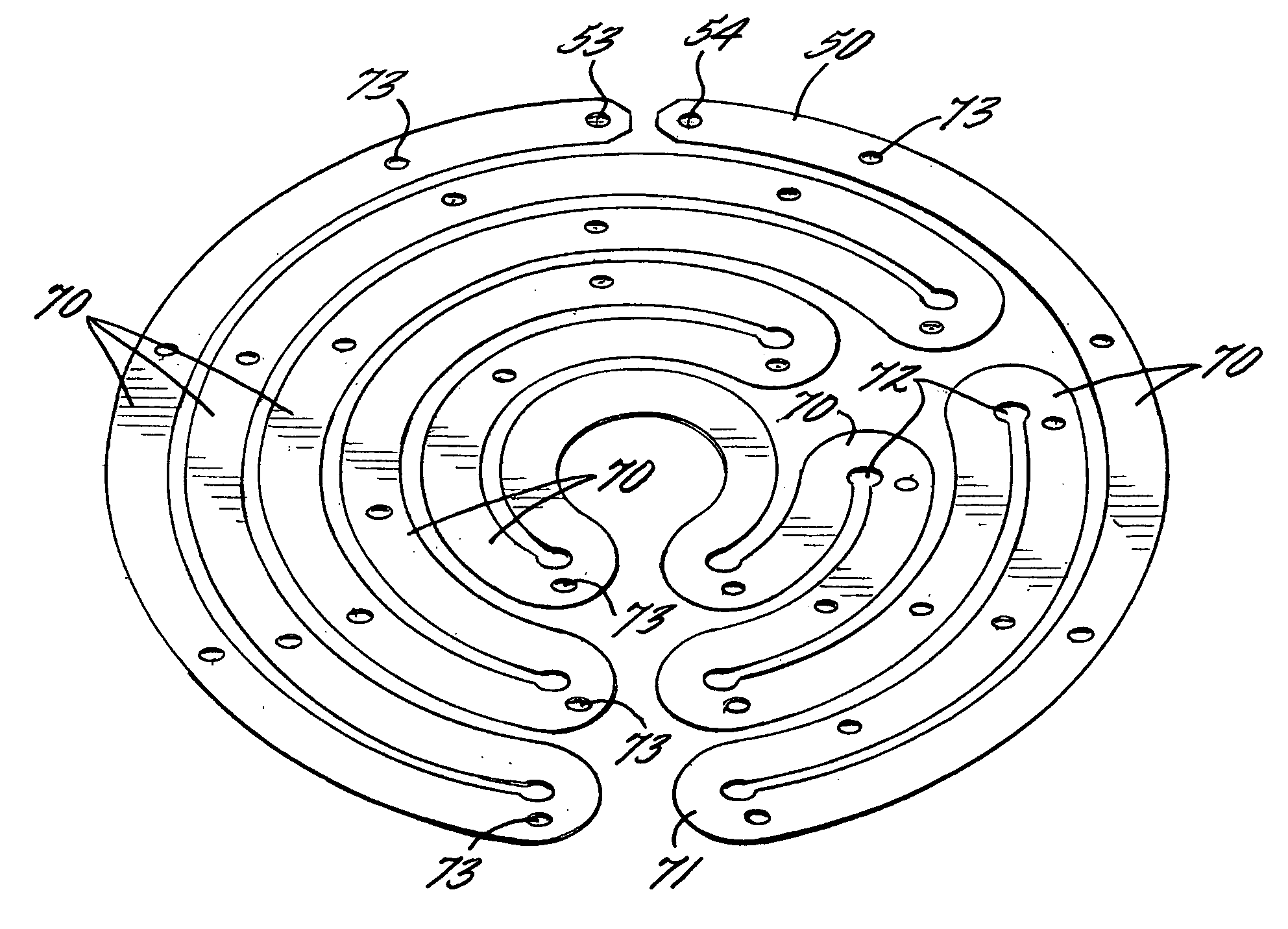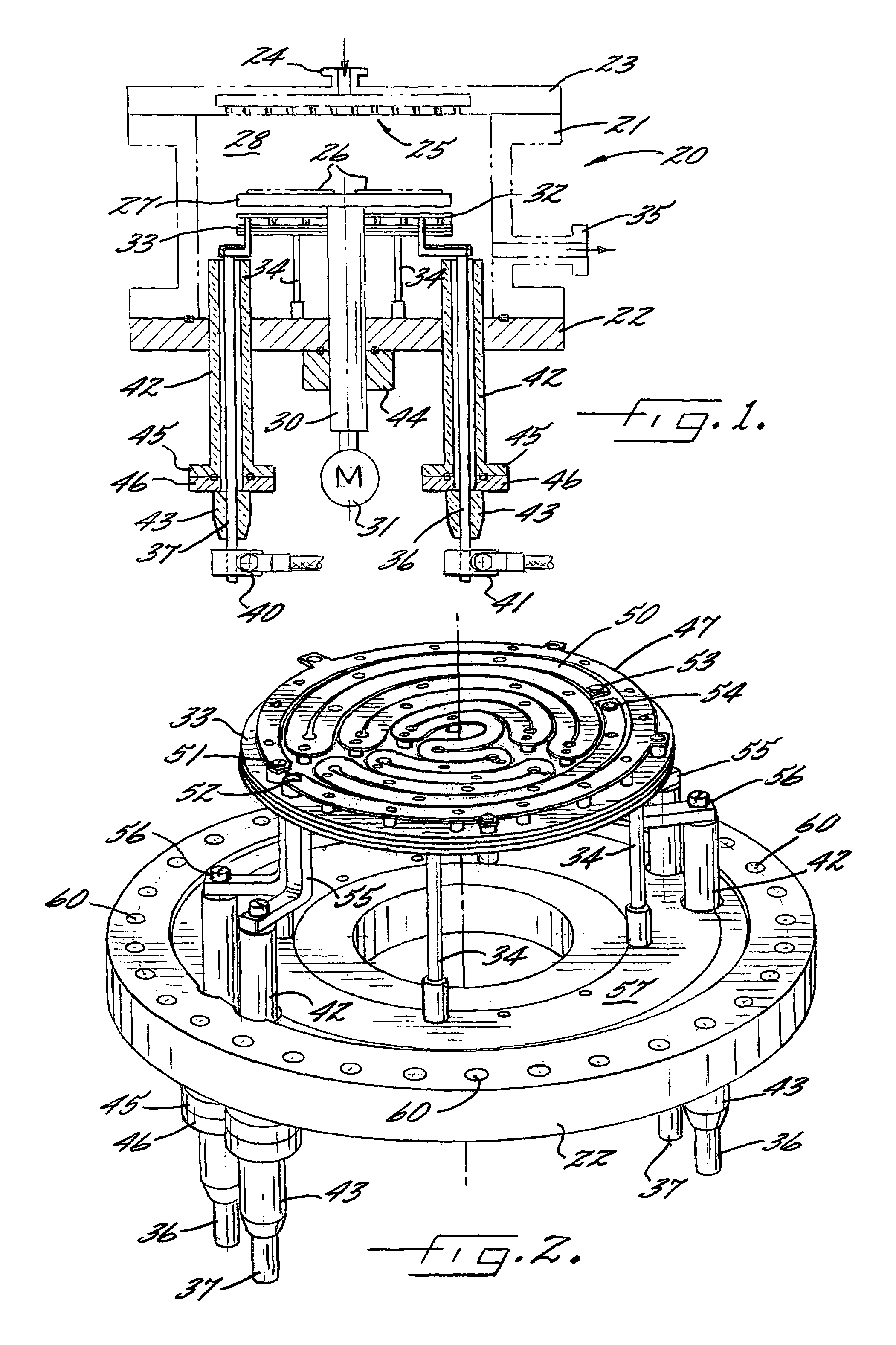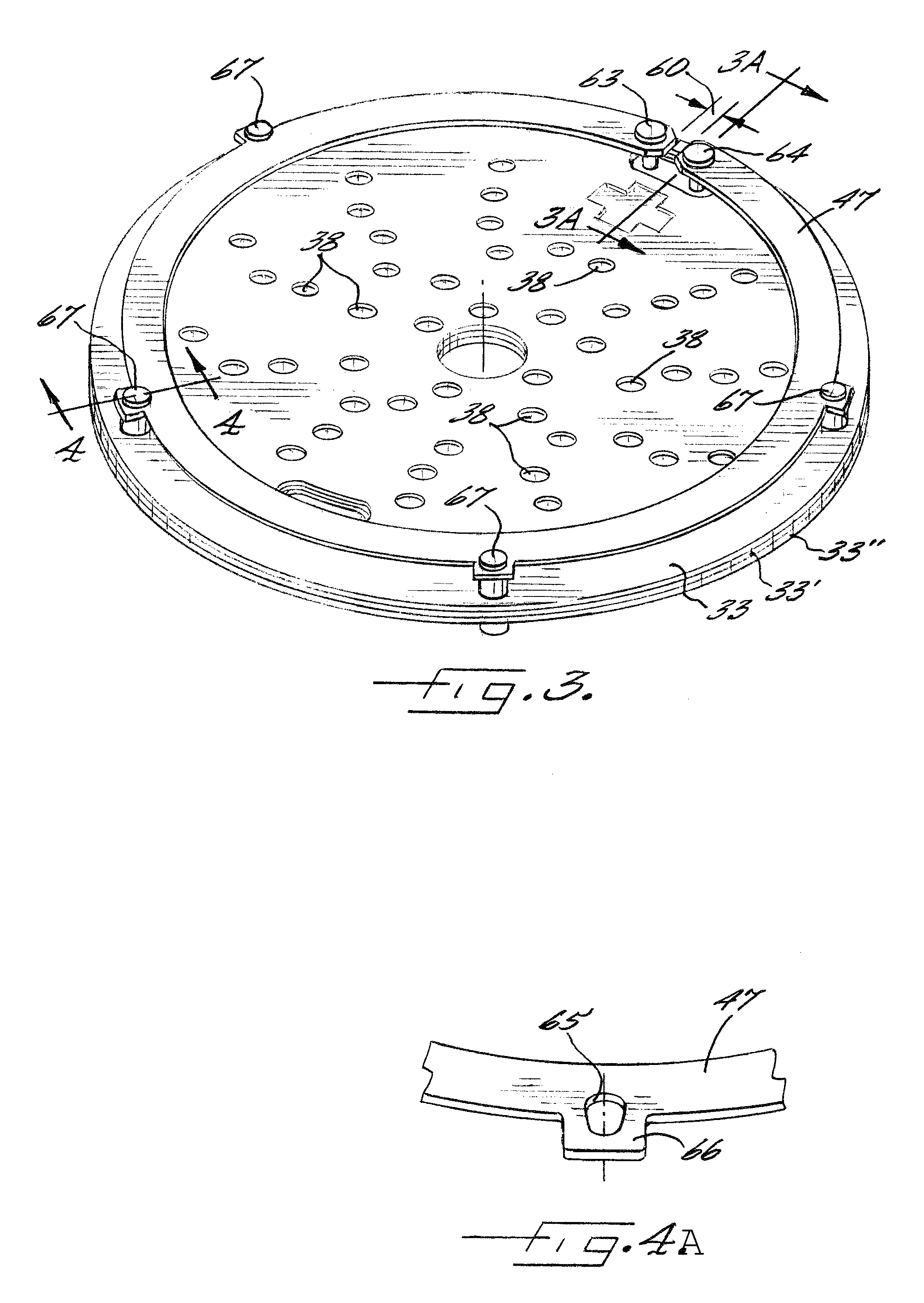Restricted radiated heating assembly for high temperature processing
a heating assembly and high temperature processing technology, applied in the direction of chemically reactive gases, crystal growth process, coatings, etc., can solve the problems of resistive heating, filament expansion, filament distortion, etc., and achieve the effect of reducing the difference in resistan
- Summary
- Abstract
- Description
- Claims
- Application Information
AI Technical Summary
Benefits of technology
Problems solved by technology
Method used
Image
Examples
Embodiment Construction
[0037]FIG. 1 is a cross-sectional view of a vapor deposition reactor broadly designated at 20. Although the invention will be described with respect to the figures, those of skill in this art will recognize that a number of variations on the exact type and style of the reactor can be used while still incorporating the claimed invention. Accordingly, FIG. 1 and the other figures herein, are exemplary rather than limiting of the invention.
[0038]The reactor 20 is generally cylindrical in shape and includes annular walls 21, a circular floor or base plate 22, and a circular top portion 23 that together define a chamber 28. In the style of reactor illustrated in FIG. 1, the top portion 23 also includes a gas inlet 24 and a manifold broadly designated at 25 (sometimes referred to as a “shower head”) for more evenly distributing incoming gases into the chamber 28 and across the substrates 26 upon which deposition growth is to take place.
[0039]The substrates 20 typically rest on a substrate...
PUM
| Property | Measurement | Unit |
|---|---|---|
| temperature | aaaaa | aaaaa |
| conductive | aaaaa | aaaaa |
| resistance | aaaaa | aaaaa |
Abstract
Description
Claims
Application Information
 Login to View More
Login to View More - R&D
- Intellectual Property
- Life Sciences
- Materials
- Tech Scout
- Unparalleled Data Quality
- Higher Quality Content
- 60% Fewer Hallucinations
Browse by: Latest US Patents, China's latest patents, Technical Efficacy Thesaurus, Application Domain, Technology Topic, Popular Technical Reports.
© 2025 PatSnap. All rights reserved.Legal|Privacy policy|Modern Slavery Act Transparency Statement|Sitemap|About US| Contact US: help@patsnap.com



